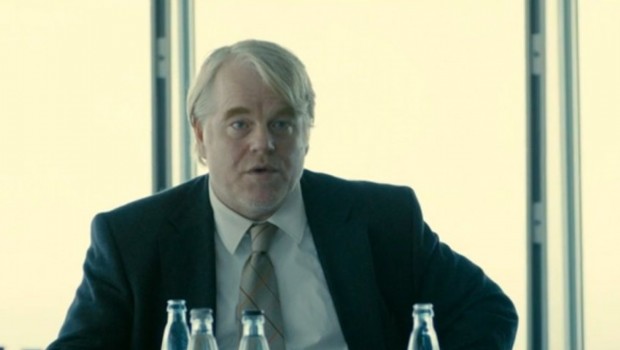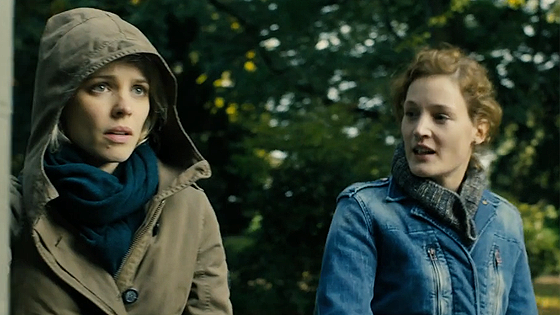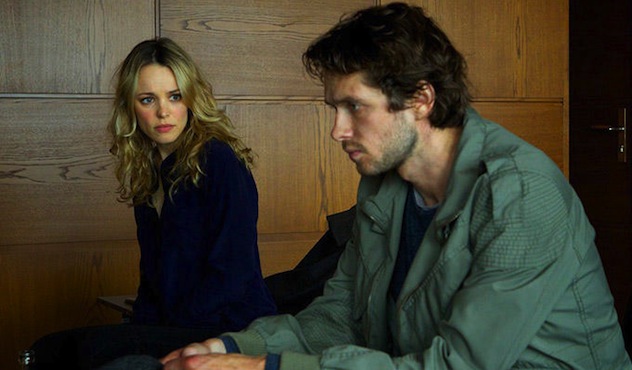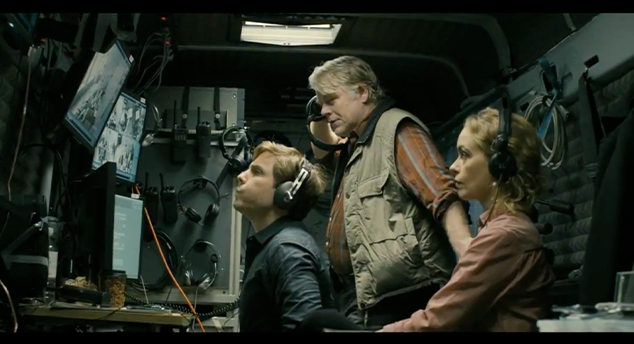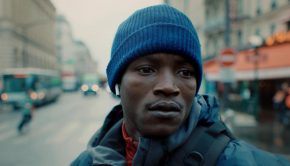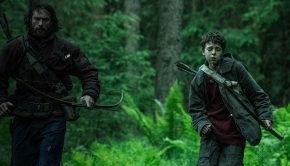A Most Wanted Man – Film Review
Reviewed by Damien Straker on August 4th, 2014
Roadshow presents a film by Anton Corbijn
Produced by Andrea Calderwood, Simon Cornwell, Stephen Cornwell and Gail Egan
Screenplay by Andrew Bovell, based on ‘A Most Wanted Man’ by John le Carré
Starring: Philip Seymour Hoffman, Rachel McAdams, Willem Dafoe, Daniel Brühl, Nina Hoss and Robin Wright
Music by Herbert Grönemeyer
Cinematography: Benoit Delhomme
Edited by Claire Simpson
Running Time: 122 minutes
Rating: M
Release Date: July 31st, 2014
Mohamed Atta was the Egyptian-born leader of a terrorist cell in Hamburg, Germany that spearheaded the September 11 terrorist attacks. According to a BBC Panorama documentary, Atta came from Egypt to Hamburg in 1992, where he studied town planning and was already a qualified architect. Over the years he took solace in finding similar minded people in his Mosque that convinced him to become a radical extremist. He travelled to Afghanistan to partake in Al-Qaeda training camps where he and others developed terrorism tactics. He was part of a trio that took flying lessons in Florida allowing them to hijack the planes that attacked the World Trade Center. Atta is described in the documentary as the link between all nineteen hijacks on the day. His group flew the first plane into the North Tower. Several missed opportunities, close calls and a failure for people to act on their suspicions of these men resulted in the deaths of three thousand people.
A Most Wanted Man is set in contemporary Hamburg and casts Atta’s shadow over the narrative beats and characters. But director Anton Corbijn (The American, Control) is also testing our fears and our ethnic perceptions so we are never entirely sure who the villains are or if they exist at all. Films like this are far from the simplicity of mainstream features like Taken which neatly divide characters into black then white. Instead, this slow-burning film about surveillance asks moral questions regarding how long we must contain our racial and prejudicial impulses before acting on our suspicions. The opening images of the film visualises this unease, beginning with the quiet slosh of a gold tinged sea at night and then the sight of white wine in a glass. This implies on both sides, outsiders and the law, that people are surfaces with something unknown submerged below. An American character in the film states: “Every good man has a little bit of bad in them” which emphasises that no one can be trusted and there are no goodies and baddies anymore. Corbijn also uses grey, muted colour tones and the night shadows to reflect the loveless, colourness nature of an oppressive fascist-like state.
The plot immediately tests our perceptions by opening with Issa Karpov (Grigoriy Dobrygin) sneaking into a Hamburg port. A long shot of him walking through a car park reflects our detachment from him, not knowing his painful history. He is watched by a German surveillance team that monitors the Islamic community in Hamburg. Gunther Bachmann (Philip Seymour Hoffman) heads the team and is pressured by his superior Dieter Mohr (Rainer Bock) to pursue Karpov. Gunther is also interested in watching Islamic lecturer Dr. Faisal Abdullah (Homayoun Ershadi), who preaches violence against the innocent is not Allah’s way. Gunther only has a certain amount of time to act before Mohr’s team intervenes. Meanwhile, after being housed by Muslims in the neighbourhood Karpov finds aid from Annabel (Rachel McAdams), a human rights lawyer who uncovers he is an escaped refugee who was tortured. Both the Karpov and lecturer cases come together involving a large sum of inheritance that he has earned from his father and a shipping company connected to Al-Qaeda.
The film’s moral complexity and gravitas stem from the source material, a spy novel by John le Carre. Le Carre worked for both MI5 and MI6, performing interrogations, which accounts for why adaptations of his work feel genuine in terms of actual spy work like surveillance. Anton Corbijn adds to the rawness by using handheld cameras, unbroken takes and long shot durations to provide time to quality actors like Philip Seymour Hoffman who is excellent in his last role. Sporting a thick German growl, his performance is a master class in body language and mannerisms. Gunther’s alcoholism, slumped shoulders and general untidiness are a bleak portrait of an empty man without overstating his backstory. He and Karpov are not dissimilar. They are both outcasts with violent pasts. Gunther is haunted by an event in Beirut where he failed to act. He is perpetually alone, a cave dweller he calls himself, because he uses people. When he kisses a colleague he looks over her shoulder to continue watching one of his targets. Similarly, a scene on a boat shows him caressing the face of the lecturer’s son and hugging him as false comfort when the young man wants out. Annabel’s values as a lawyer and her motives for helping Karpov, while initially well-intended, become shaded dark grey as she is forced to compromise. The internal conflict is supplied by Rachel McAdams’ face, which implies the discomfort and angst of her character in one of the actress’s most subtle performances.
Each of these characters is morally ambiguous because the film is reaching for larger existential questions about why people act through mere presumptions and suspicions of other cultures, as well as questions about how contemporary laws blindly allow people to be detained on suspicion of terrorism alone. As an alcoholic who has so little purpose his life, Gunther asks: “Why are we doing this?” His American colleague replies: “To make the world a safer place. Isn’t that enough?” Since the film intentionally avoids painting clear villains her statement becomes hollow and meaningless. The film’s ending, which shares similar intensity to the climax of Martin Scorsese’s Mean Streets, epitomises the same falsity, showing we can never be fully prepared for who will betray us next. In retrospect, Mohammed Atta’s teachers said while he was studying he was a strong student. They noticed change in him over the years but they never acted. After September 11 they must also have felt unbearable betrayal and embarrassment but only once it was too late. Hindsight is such a beautiful, painful thing.
Summary: This slow-burning film about surveillance asks moral questions regarding how long we must contain our racial and prejudicial impulses before acting on our suspicions.


